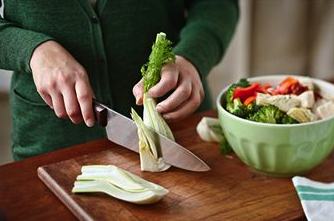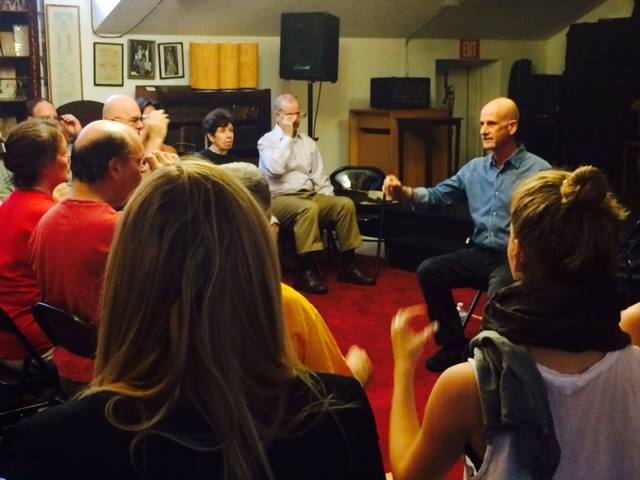 Alexander Technique In The Kitchen
Alexander Technique In The Kitchen
For those of you who are unfamiliar, or haven’t been in one in a while, the kitchen is the room with stove, oven, sink and dishes. The oven is the thing under the stove…
We seldom do our ‘regular work’ in the kitchen, making it an environment where the stimulus is usually not turned up. This helps make it another perfect place to practice the Alexander Technique.
At our recent Alexander Technique lesson, one of my Alexander Technique students told me she noticed how much extra effort and tension she was using while chopping vegetables. Under normal circumstances we are not angry at vegetables. Next time you’re cutting something, take a moment and pause. Notice the grip you are using while holding the knife. If you are gripping your hands more than necessary are you also over-using your forearm, bicep, shoulder, neck, or facial muscles?
When applying the Alexander Technique it is sometimes useful to exaggerate your habit, just to examine what’s going on. Notice if there’s excess tension as you hold a pot, or frying pan, or even as you open a refrigerator door or cabinet.
How much force do you really need to wash a dish? Notice any extra effort, and let it go.
We reach for things constantly in the kitchen. Every time you reach for something there is an opportunity to apply the Alexander Technique. When reaching, think of your fingertips leading the movement instead of thrusting your arm out from your shoulders.
Remember: the Alexander Technique is more than just a way to improve your posture. It is a skill you can learn for life.
Mark Josefsberg-Alexander Technique NYC
(917) 709-4648










Great blog, Mark. Applying Alexander Technique as I prepare food has been so helpful to me in letting go of tension (in my neck particularly). And, as you say, there are so many things we do in the kitchen that can get us in trouble – I found using awareness and AT directions when chopping particularly beneficial.
Hi Imogen,
It is a great place to apply Alexander Technique principles. There’s a lot of movement in the kitchen, including hand and arm movements. Also, although I didn’t write about it in the post, there’s a lot of shifting weight. Depending on the size of the kitchen, we usually take small steps. It can be a very tempting place to collapse. It’s also a tempting place to overdo everything, right?
Mark
Hi Mark,
one of my all time favourite lessons was to a student who wanted help in whisking eggs. We discovered that if she thought about what muscles actually did the whisking (which turned out NOT to be her trapezius!)everything went much easier.
This is indeed a skill for life, and we can use the principles and tools of this wonderful work anywhere, anytime. 🙂
Hi Jennifer,
I like the whisking eggs idea! There’s a lot of that kind of action in the kitchen, I think. There’s a lot of opportunity to use fine motor skills. Definitely you can practice the Alexander Technique anytime, anyplace!
When I was in the very beginnings of Alexander Technique lessons and started trying to become aware of unnecessary tension, one of the funniest ironies I first observed was while working in the kitchen. It was when I went to press a button on the blender. I noticed I was forcefully holding the button down the whole while the ingredients blended as if I could speed and help the process along with the extra power and effort of my finger! I believe in actuality once a button is pressed, the blender runs without holding the button down at all! I started laughing out loud to myself.
I love to use this story when describing to others the idea of putting more effort and tension into something than necessary: “How much effort does it take to to hold a blender button down?”
I also heard somewhere once, someone talking about how they believed they were getting tennis elbow just from how they were picking up the coffee pot every day!
Kim, thanks so much for this. I love the excess tension-blender story! It’s true. We all do things like this. People walk with their necks and faces jutting forward when they walk, as if it will speed up the walk. People do the same thing when they drive! The Alexander Technique really helps to be aware of things in the kitchen, and in every other room. Including no-room. We hold kitchen knives and coffee pots as if they weighed 40 pounds. The Alexander Technique teaches to use the right amount of effort for any task. How much does a toothbrush, a razor or a comb weigh? Almost nothing. Same for a guitar pick or a violin bow, or our fingertips as we place them on the computer keyboard.